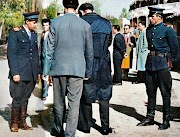A Tragedy at Sea: The Shipwreck that Shook the Adriatic
Albanian Chronicles Diary
March 28, 1997
In the spring of 1997, the placid Adriatic Sea suddenly became the scene of a tragedy that would remain indelible in the collective memory of both Europeans and Albanians. A modest ship, laden with the hopes and dreams of those seeking a better life across the border in Italy, was tragically involved in a collision with a naval vessel. The incident not only brought an abrupt end to the voyage, but also to the lives of many people, and raised critical questions about immigration management and maritime safety.
The incident, which took place in the spring of that year, marked a turning point that shook the foundations of public perceptions of migration and the safety of maritime routes. Waters that normally evoke tranquillity and serenity were suddenly transformed into an arena of despair and tragedy. As the sun illuminated the waves, the fate of t life collided with the harshness of circumstances.
The ship, a symbol of hope for those on board, became a silent monument to innocence lost. Families anxiously awaiting news of their loved ones were thrown into an abyss of uncertainty and grief. The lure of the promised land became a shattered illusion as the turbulent currents of life swept away the secrets hidden in the abyss.
The impact of this tragedy was not limited to the individual lives lost, but spread like a shockwave through local, national and international communities. Unanswered questions crowded into the minds of those seeking justice and meaning in an increasingly complex and inscrutable world. The spring of 1997 remained etched in the hearts of all those touched by this terrible event, a constant reminder of the fragility and tragedy that lurk behind the seemingly placid waves of the Adriatic.
The event is marked by intense drama, heightened by the immense ambitions of those travellers, driven by desperation and the desire for a better future, who relied on the vast sea. The clash between the fragile boat and the powerful military vessel becomes a symbol of the difficulties of illegal immigration, highlighting the challenges and dangers of crossing the Mediterranean in search of refuge.
In the face of this catastrophe, the international community is forced to reflect on its position regarding migration policies and the need to ensure safer routes for those forced to flee their lands. The tragedy highlights the urgency of finding humanitarian solutions that can prevent future loss of life at sea, while underscoring the complexity of migration dynamics in the Mediterranean Sea.
It raises fundamental questions about the role and responsibilities of states in protecting the human rights of migrants and addressing the challenges of migration on a global scale. The collision between the small boat and the massive military vessel thus becomes a catalyst for a broader debate on maritime security and the humanity of migration policies.
The sinking of the small boat was not just an isolated incident, but became an emblematic case that sparked an ongoing debate on human rights, the reception of refugees and the importance of solidarity beyond national borders. This tragedy reaffirmed the urgent need for European nations to adopt a more inclusive and compassionate approach to those who, fleeing poverty, war or persecution, seek safety and dignity on Italian shores.
The event catalyzed international public attention, becoming a powerful beacon that illuminated the desperate conditions that drive individuals and families to embark on perilous journeys at sea. The impact of this tragedy on public debate and migration policy was immediate and profound, stimulating critical reflection on the responsibilities of nations in the face of similar humanitarian crises.
Authorities, faced with the magnitude of this disaster, were forced to review their policies, trying to balance national security with the humanitarian imperative to protect the most vulnerable. A heated debate ensued on how to manage immigration fairly and safely, but without forgetting the core values of compassion and solidarity that should guide the response to situations of extreme need.
Indeed, this sad episode brought global attention to the humanitarian and legal challenges posed by illegal immigration, calling for shared responsibility in protecting the most vulnerable. It raised thorny questions about how societies can and should respond to the suffering of those who, driven by desperation, rely on the sea to escape unsustainable living conditions.
The memory of this tragedy remains etched as a symbol of the intricate dynamics that characterize immigration in the Mediterranean, calling upon the collective conscience not to forget the lives lost in the search for safety and dignity. The lessons from this painful experience call for a universal appeal for an ethic of care and respect for human rights, emphasizing the importance of building bridges of solidarity rather than erecting walls of indifference.
In thinking back to the tragic story of the Katër i Radës through the words of Benedict XVI, a profound reflection on the phenomenon of immigration emerges. In 2012, a few months before leaving his papal role, Benedict XVI spoke of emigration as a "pilgrimage of faith and hope" that too often turns into tragedy. He stressed the importance of the "right not to emigrate," meaning the need for people to be able to remain in their own land without being forced into migration as the only way to a better life. This approach incites reflection on the root causes of migration crises, often linked to misguided policies or neo-colonial interventions, and the importance of working for a world in which every individual can live with dignity in his or her own country.










0 Comments